
|
| |
|
|
|
|
 |
|
|
Hungarian Corps Reserve Forces
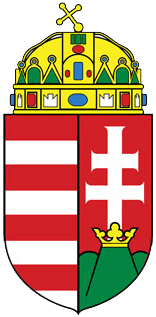 |
Hungarian Corps Troops:
Hungarian Corps Troops On The Eastern Front 1942 To 1943
with Wayne Turner
With the onset of winter the 1st Field Armoured division was withdrawn to the front reserve covering both the Hungarian Second Army and the Italian Eighth Army and immediate reserve forces were organised from Divisional and Corps troops.
Both the Huszár units of the light divisions and corps and the Bicycle Infantry of the Corps were taken out of the immediate front line and placed behind them as a local reserve in case of breakthroughs and to counter penetrating raids.
When combined together a Hungarian corps had two battalions (6 companies) of Huszár cavalry and a further two companies of Bicycle Infantry.
To support these troops were small platoons of machine-guns, mortars and guns. In addition they had access to support from corps artillery and anti-aircraft batteries. |
Winter 1942 to 1943
By mid September 1942 the Second Hungarian Army had settled into defensive positions along the Don River. Unfortunately a general lack defensive supplies like mines and barbed wire and a shortage of labour meant only the defensive areas immediately around the bridgeheads could be adequately fortified. The Don River itself was not the formidable obstacle it would seem, being shallow and easily wadeable in many places.
Supply problems plagued the Second Army, with both home and the Germans reluctant to give too much to the Hungarian troops in the front line. The Germans seeing their allies as a secondary priority and the Hungarian Government keen to withhold equipment and supplies to build up the Home Defence Army.
The weather also played a role, armoured troops complained that their 38(t) tanks needed time to warm-up in cold weather, and that if stationed to close the front lines any break-through couldn’t be stopped if the tanks weren’t up and running in time. |
Several German units were moved into the area to support the Hungarians:
168. Infantriedivision.
559. Panzerjager Abteilung (supporting above).
429. Infantrieregiment (between III and IV Corps facing Uryv).
After the neighbouring Romanian and Italian armies were crushed the Germans sent further reinforcements the Second Army sector, these included:
700. Herespanzerverband.
190. Sturmgeschutz Abteilung.
26. Infantriedivision. |
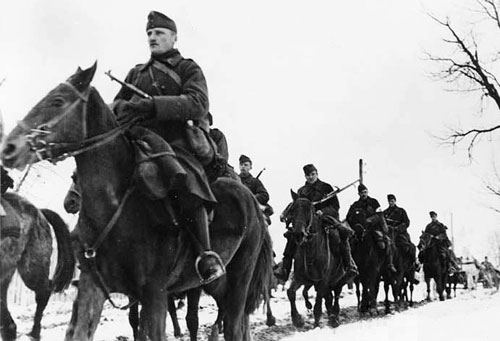 |
These units along with 168. Infantriedivision (168. ID) and the Hungarian 1st Armoured Field Division were organised into Corps Cramer as the reserve for the sector.
The Soviet Attack
On 3 January 1943 the Soviets launched several probing attacks against the Second Hungarian and Eighth Italian Armies, these attacks were successfully fended off. The storm broke over the Second Hungarian Army on 12 January.
The 40th Soviet Army launched from the Uryv bridgehead into the 7th Light Division (7th LD) and the German 429. Infantrieregiment. The Germans and the 35th Infantry Regiment (7th LD) were able to hold their positions, but the 4th Infantry Regiment (7th LD) was overrun.
On this first day the Soviets were able to drive a 6km wide gap between the III and IV Corps, penetrating up to 3km. 13 January saw Soviet attacks concentrate on the 20th Light to the north of Uryv. The 20th Light were supported by the remains of the 7th Light and German 429. IR. At dawn both corners of the Uryv bulge were still held. A counter-attack was launched by the four battalions of the III Corps reserves supported by the German 700. Herespanzerverband. By the end of the day the German Panzer force had just four Panzer 38(t)s remaining. The Hungarian troops engaged had been smashed by continuous and un-relenting Soviet attacks. |
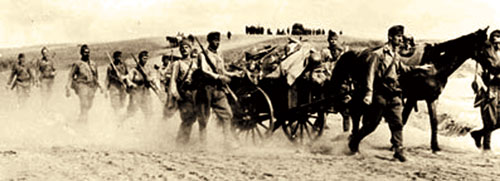 |
The commander of the German 429 IR wrote in his report: ‘The Hungarian troops had fought very well, and that the cause for the failure of the attempt lay with the helplessness of the Hungarian units against enemy armour and the freezing weather.’ The Gap in the Hungarian lines had widened to 10km wide and 12km deep! |
On January 14 the Soviet offensive got into full swing and thrusts were made from Stutye and Kantemirovka. The Soviet 18th Rifle Corps smashed through the 12th LD and moved towards Ostrogosk. The 3rd Tank army attacked the XXIV Panzerkorps (26th Tank Corps) encountering resistance until they committed two tank corps against them, though progress was still slow.
The release of the German 168. ID from reserves on January 15 allowed the slowing in the Soviet advance on the southern flank, but to the north a continuous flow of Soviet troops poured through the gap. The remnants of the Hungarian III Corps now faced south, their western flank exposed. Other Divisions along the front were all under pressure. The 7th and 12th LD had been destroyed; the Second Hungarian Army sector was quickly running out of men.
On January 16 it was the 13th LD at Karotyak turn to come under pressure from the Soviet 40th Army. After heavy fighting they withdrew on Ostrogosk where they and the 10th LD and German 168. ID became surrounded. The 10th LD lost its artillery to the Soviet 18th Rifle Corps when it couldn’t be moved because of lack of horses.
Corps Cramer launched a counter-attack. It stalled theb advance of the Soviet 18th Rifle Corps, but it was called off when the 1st Armoured Field Division’s flanks were exposed. The Soviets also began to get behind the positions of the VII Corps, the Second Hungarian Army ordered retreat before their position became too exposed.
Resistance continued in the north by the III Corps, with German reinforcement, on 17 January. The Soviet target was Alexeyevka and Ilovskoye, Ilovskoya was the gateway to the Hungarian retreat. Lead elements of the Soviets 40th Army reached the airfield at Ilovskoya around noon, but fierce resistance from the Hungarian Airforce ground crew forced them to withdraw. |
The IV Corps was ordered to retreat on Ostrogosk. By evening all communication from the General Jány’s Second Hungarian Army HQ were cut, and he no longer had contact with any of his units.
On 18 January Hitler declared Ostrogosk a fortress to be defended to the last man, trapped inside were the remainder of the 10th and 13th LD and German 168. ID and corps troops from the III and IV Corps. |
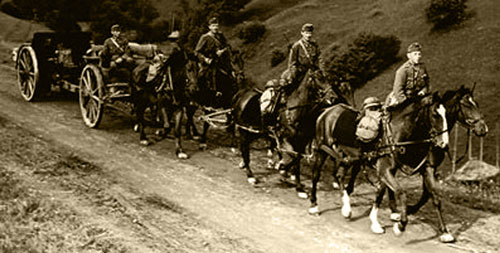 |
The VII Corps encountered the left wing of the Soviet 18th Rifle Corps while withdrawing and when Soviets tanks appeared to the south their retreat rapidly turned into a rout. The Soviets occupied Alexeyevka, but a counterattack by the 1st Armoured Field Division pushed the Soviets out. The Hungarian armour then joined the defence of Ilovskoye to the north.
On 19 and 20 January the defence of Alexeyevka, Ilovskoye and Ostrogosk continued, and on 20 January the Soviet 40th Tank Army turned its attention to the German 2. Armee to the north, leaving the 18th Rifle Corps and 3rd Tanks Army to finish off the Hungarian Second Army. |
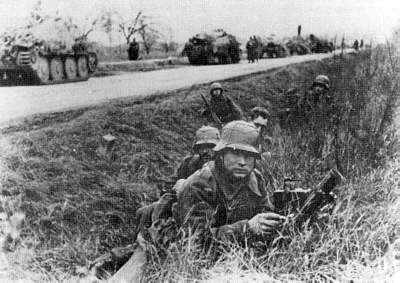 |
On January 21 contact was re-established with Ostrogosk and the last German and Hungarian troops were withdrawn to Novyi Oskol, meanwhile the 1st Armoured Field Division tenaciously held of continued attempts to take Alexeyevka. The remaining Hungarian troops in the Ostrogosk-Alexeyevka area were grouped together under Corps Cramer, and on 22 January they started withdrawing towards Budyenny and on to Novyi Oskol.
On 22 January the Hungarian Second Army ceased functioning as a command unit and was moved to the rear to reorganise the Hungarians. Those units still capable of fighting remained with Corps Cramer, under German command. |
On 25 January, Corps Cramer was reassigned the German 2. Armee, at this time there was still 12,000 Hungarians fighting. As the front stabilised Hungarian units were sent to the rear where they began their reorganisation. The Hungarians wouldn’t see any serious fighting again until 1944.
~ Wayne. |
|
Hungarian Steel:
Mid-war Hungarian Forces 1942-43.
The Mid-war booklet for the Hungarians contains the following:
■ History of the Hungarian 2nd Army on Don Front, 1942 to 1943.
■ Special Rules for Hungarians.
■ T-38 Tank Company Formation.
■ Panzer IV Heavy Tank Company Formation.
■ Autocannon Company Formation.
■ Motorised Rifle Company Formation.
■ Huszár Squadron Formation.
■ Rifle Company Formation.
■ Support Units
■ Hungarian Unit Cards
■ Hungarian Command Cards
Learn More about Hungarian Steel...
|
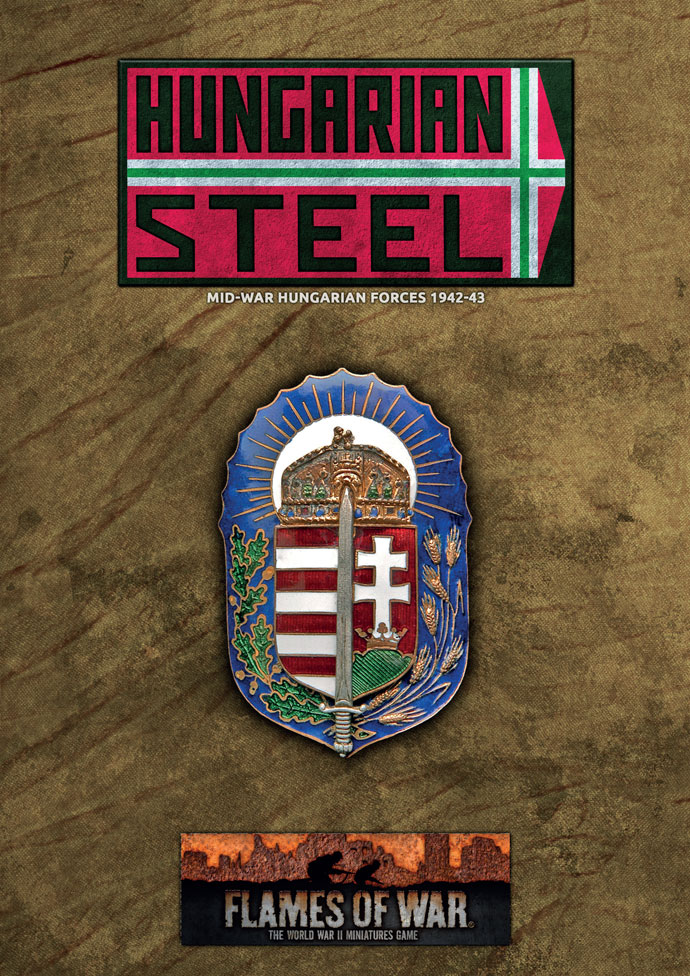 |
Last Updated On Friday, February 18, 2022 by Wayne at Battlefront
|
|
|